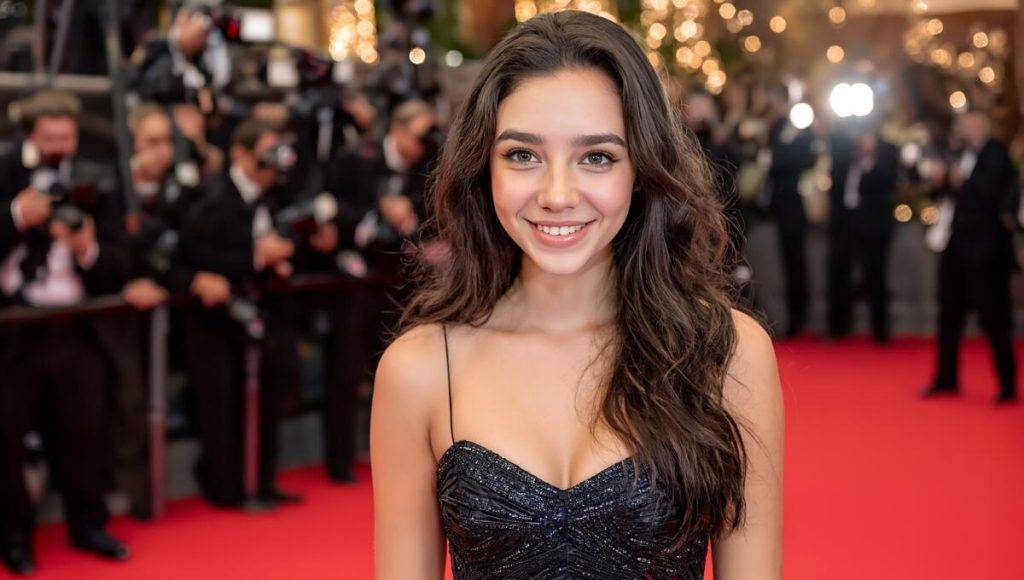There’s a new Hollywood newcomer who already has a long list of haters: Tilly Norwood, the AI-generated “actor.”
Dutch comedian Eline Van der Velden, the head of AI production studio Particle6, which developed Tilly, said she wants the AI character to be the next Scarlett Johansson.
But not if the rest of Hollywood has its way.
After Van der Velden announced what she calls “the world’s first artificial intelligence talent studio” at a film festival and said Tilly had talent agents hoping to sign her, this news of potential representation sparked widespread Hollywood backlash.
Multiple actors’ unions have released statements condemning Tilly. Actors have also accused Tilly’s makers of stealing real people’s images to make the AI-generated character.
“And what about the hundreds of living young women whose faces were composited together to make her?” actor Mara Wilson posted on social media. One Nashville-based musician even claims that Tilly is her doppelganger.
Kristen Bell Wore All Armani to the Emmys
The company behind Tilly denies that the character was created with stolen images.
After outcry, Van der Velden said Tilly was “not a replacement for a human being, but a creative work — a piece of art” in a social media statement.
But no matter how original or creative you believe Tilly to be, she is definitely drawing from tired old tropes about women and raising unsettling implications for real working people, AI experts caution. Here’s what you need to know.
Tilly reinforces more of the same tired beauty standards for women.
Tilly Norwood is not real, but the AI character is causing a real debate over how women’s images get used. Above are images from Tilly’s Instagram account.
For one, Tilly replicates a narrow idea of what generative AI thinks a woman should look like.
In a Washington Post investigation of three of the leading AI image tools, the Post found that generative AI thinks beautiful women should look thin, young and white — which is exactly how Tilly looks.
What we see on social media — including the accounts set up for Tilly on TikTok, Facebook and Instagram — might have long-term effects on how people view their own real bodies.
Safiya Noble, a professor at the University of California, Los Angeles, and the author of the book “Algorithms of Oppression,” said Tilly is a continuation of the kind of distortions that social media photo filters cause people.
“Those distortions, even though they are seemingly unreal, they circulate so much in our culture that then are celebrated and … liked and hearted,” Noble said. “And that certainly has a psychological and emotional toll on us.“
A 2022 study on Instagram found that browsing how other people looked on the popular social media platform was linked to “detrimental outcomes” around body dissatisfaction in young women.
Tilly’s obedience might be the most unsettling part about “her.”
Above all, Tilly reveals a lot about how corporations value women’s work.
Alexandra Mateescu, a researcher with Data & Society’s Labor Futures program, said what she found most interesting and unsettling about Tilly’s existence came from a line in a Particle6 video where she appears in her first role.
In an AI-generated comedy sketch from Particle6, Tilly gets cast to be in a TV show. A man then states, “She’ll do anything I say; I’m already in love.”
That line suggests “this vision of this feminine, docile, cute, young actress who won’t talk back or complain about working conditions or anything,” Mateescu said.
That’s why, for Mateescu, her biggest worry with Tilly is “more about these kinds of marketing exercises being used as a cudgel, particularly for actors at the bottom of film industry hierarchies, to discourage them from demanding better working conditions under this threat of potentially being replaced.”
Mateescu said she has seen this power dynamic in other creative industries, like modeling. She recently co-authored a paper on how generative AI is making it easier for companies to use a model’s image and measurements and alter them without a model’s knowledge or compensation.
In her research, “people at the top of the industry, both photographers and top models, they could view AI as this creative tool in their arsenal to be able to enhance their creative practices,” Mateescu said. But struggling models doing profit-driven e-commerce catalogs were more negatively impacted. “And I think that’s sort of the same pattern we see across industries.”
In this sense, Tilly might represent a bigger existential threat to vulnerable, newer actors who do not have the same power and networks as A-list stars.
In Noble’s view, Tilly’s existence normalizes “controlling women’s images” and the idea that it’s OK to “make women do what we want them to do. That culture is prevalent all around us.”
Avoiding “AI personhood” might be the best way to deal with Tilly.
Tilly is not real, but it’s normal if you’re confused over what to call her. That might be by design.
Noble pointed to the character saying, “I may be AI generated, but I’m feeling very real emotions right now” in a post appearing on her Facebook page as an example of the kind of misrepresentation this AI-generated actor perpetuates.
“The more kind of anthropomorphized they are, the more misleading and deceptive they are to the public,” Noble said. “This is why these technologies are so incredibly dangerous.”
One way to resist is to be more careful about how you talk about AI-generated projects like Tilly.
Instead of seeing Tilly as an “actor,” as her profile describes her, or as the next Scarlett Johansson, as her creator hopes her to be, experts suggest you should see her for what she really is — a marketing product.
We remain committed to providing you with the unflinching, fact-based journalism everyone deserves.
Thank you again for your support along the way. We’re truly grateful for readers like you! Your initial support helped get us here and bolstered our newsroom, which kept us strong during uncertain times. Now as we continue, we need your help more than ever. We hope you will join us once again.
Support HuffPost
Already contributed? Log in to hide these messages.
That’s why Noble suggests against calling Tilly art and instead categorizing Tilly as the latest example of low-quality, spamlike “AI slop.”
And try to avoid referring to Tilly as an actor. “We should call it ‘it,’” Noble said. “We should talk about it like a machine learning model.”
“The notion of AI personhood is a marketing exercise and a legal maneuver that I don’t think we should buy into,” Matreescu said. “Tilly is not an actress any more than, like, Sid the sloth from the ‘Ice Age’ movies is an actor. It’s just a digital likeness.”


